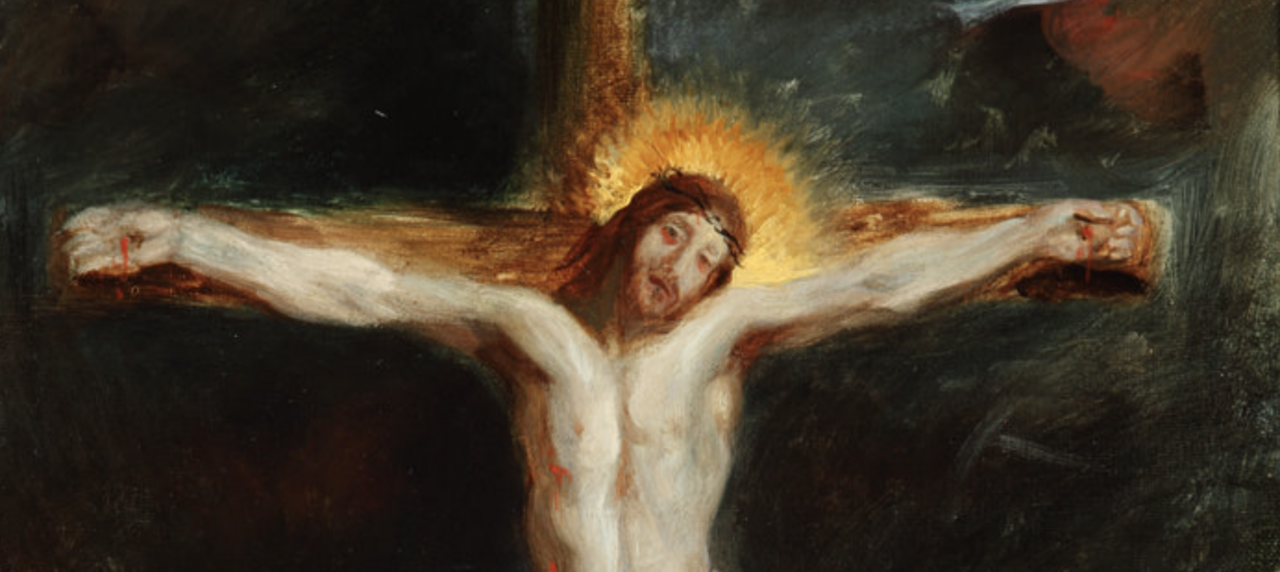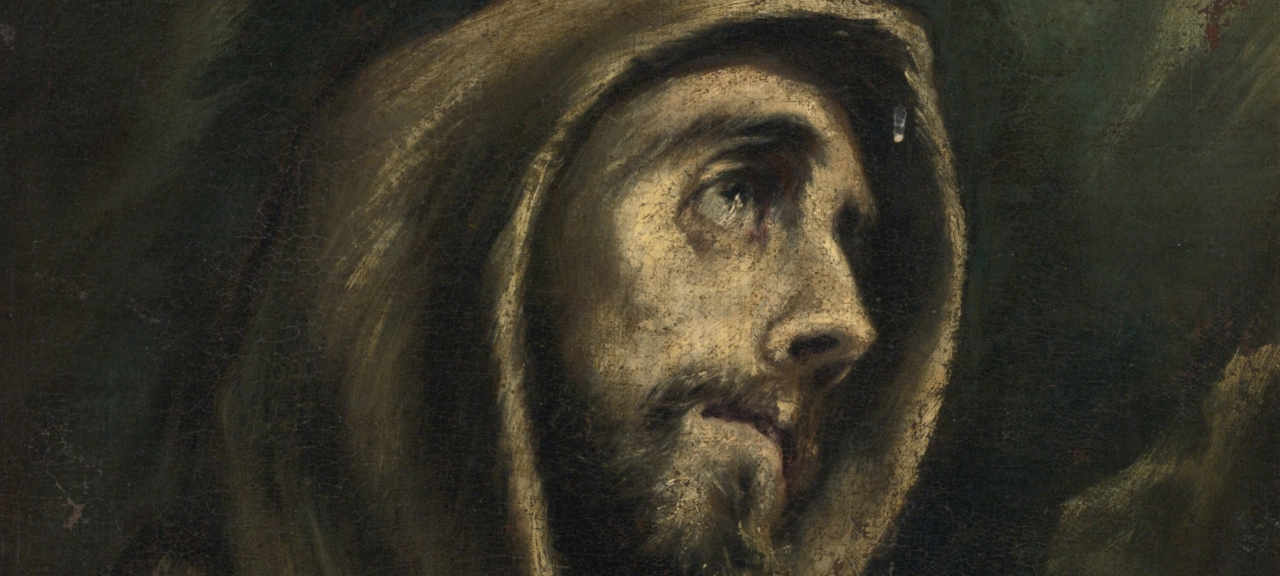In a passage from his classic Confessions, St. Augustine looks back on his life and admits: “Late have I loved you O beauty so ancient and new, late have I loved you!” Have we also come late to know God as beautiful? Or worse still, maybe we have yet to experience God’s beauty. So how can we come to know God as beauty, not late but early? A good place to begin, as always, is with Scripture.
The Bible presents us with the idea of God as the origin and source of all beauty. All of visible creation, with humanity at its pinnacle, is marked by God’s goodness and beauty. Both the scientist and the child can observe the order, harmony, and beauty of the universe and learn something of the one responsible for it all: “From the greatness and beauty of created things comes a corresponding perception of their Creator for the author of beauty created them” (Wis. 13:3, 5).
Creation is to be contemplated and admired by human beings with the effect of raising their hearts to the Creator. In the presence of creation’s beauty, the human person feels humbled, amazed, and moved to praise: “When I see the heavens, the work of your hands, the moon and the stars that you have arranged; what is humankind that you are mindful of us, human beings that you care for them? . . . Lord our God, how great is your name through all the earth” (Psalm 8).
We humans are marked by the beauty of the one who made us. For this reason, God delights in his own beauty he sees in us.
In the New Testament, all beauty is concentrated on the person of Jesus Christ, the Word made visible, “full of grace and truth” (John 1:14). In him, God’s eternal beauty became a human being. Christ is the one who “reflects the glory of God and bears the very stamp of his nature” (Heb. 1:3). By prayerfully observing his words, it dawned on the early Christians that the very nature of God was unconditional love: “Your sins are forgiven” (Mark 2:5); “Neither do I condemn you” (John 8:11); “God so loved the world” (John 3:16); “Come to me all you who are heavily laden and I will give you rest” (Matt. 11:28). These beautiful words of Christ perfectly corresponded to his beautiful actions—his healings, his accompaniment of sinners, forgiveness for his killers, his raising of the poor and lowly.

Yet the beauty of his words and actions were often hidden beneath his suffering and rejection. His brutal torture turned him into someone who “had no form of comeliness” to such an extent that he “seemed no longer human” (Is. 53:2, 14). This outward disfigurement because of our sins was part of his work of saving us—taking the ugliness of sin upon himself so as to restore the beautiful image and likeness of God within us.
The main symbol the Gospels use to describe this beauty of Jesus Christ is light. The prophesy of Zachariah states that Christ would be the one to “give light to those in darkness, those who dwell in the shadow of death” (Luke 1:79). During the presentation in the temple, the old prophet Simeon saw the infant and rejoiced that he finally saw “the light to enlighten the nations and glory for your people Israel” (Luke 2:29-32). In all three of the synoptic Gospels, Jesus’ Transfiguration is recorded when his person became illuminated from within with an intense divine light (Matt. 17:1-8; Mark 9:2-8; Luke 9:28-36).

With the evangelist John, this beauty of Christ is also symbolized by light and the concept of “glory.” This is spelled out in the prologue of his Gospel where Christ’s coming into the world is associated with “a light that the darkness could not overpower” (John 1:5). Later at Cana, John interprets the miracle that Christ performed as letting his glory be seen in a way that leads to faith in him (John 2:11). In the book of Revelation, John imagines believers in Christ not only observing his glory but sharing in it too. In the final age, God will unite himself to his people as a husband to his bride, sharing his own beauty with those who accept him. This is the people the Lamb has married, the holy city, the heavenly Jerusalem that enjoys “the radiant glory of God and glittering like some precious jewel of crystal-clear diamond” (Rev. 21:11). This idea of the light and beauty of God being shared with those who believe is also found with Jesus himself. “I am the light of the world” he declared, and “those who follow me will not walk in the dark but will have the light of life” (John 8:12). Therefore, when Jesus exhorted his followers to be “the light of the world,” he commissioned them to be vessels of his own light, beauty, and truth (Matt. 5:14). For Jesus, his saving mission was to be an enabler of sight, to heal blindness so that we could see beauty where it is to be found.
This scriptural theme of beauty was taken up by many of the Church Fathers and saints. For St. Gregory of Nyssa (335-395): “Our life is stamped with the beauty of [Christ’s] thought. The inner and the outer person are harmonized in a kind of music.”
For St. Paulinus of Nola (354-431), the Creator is the composer of beautiful music, “the musician who controls that universal-sounding harmony which He exercises through all the physical world.” We humans are absorbed by this music in a way that attunes us to its harmonious beauty.

Noted for his beautiful mind, St. Gregory of Nazianzus (329-390) explains in his Orations that the union of God’s beauty and human beings happens through baptism: “Baptism is God’s most beautiful and magnificent gift. . . . It is called gift because it is conferred on those who bring nothing of their own.”
As someone who discovered God’s beauty late, Augustine encourages his audience to explore the beauty of God’s handiwork because doing so will lead us to the One whose beauty never changes: “Question the beauty of the earth, question the beauty of the sea, question the beauty of the air . . . question the beauty of the sky. . . . These beauties are subject to change. Who made them if not the Beautiful One who is not subject to change.” In sum, for Augustine, God is “the beauty of all things beautiful.”
For St. Thomas Aquinas (1225-1274), our experience of beauty occurs at the intersection of wholeness (integritas), harmony (proportio), and radiance (claritas). According to Thomas, beauty gives rise to contemplative pleasure—“Beautiful things please when seen.” Beauty triggers love, for we fall in love with the beauty we see in a way that provides joy and delight. In Thomas’ understanding, “God created the universe to make it beautiful for himself by reflecting his own beauty.”
For St. John of the Cross (1542-1591), when the love of God encounters human beings, it transforms us more into its own love and beauty. John explains that at the Incarnation, Jesus “took on our human nature and elevated it in the beauty of God, and consequently all creatures, since in human nature he was united with them all.”
For St. Catherine of Siena (1347-1380), we humans are marked by the beauty of the one who made us. For this reason, God delights in his own beauty he sees in us: “You, eternal Trinity, are the craftsman; and I your handiwork have come to know that you are in love with the beauty of what you have made, since you made of me a new creation in the blood of your Son.”

Finally, according to St. Bonaventure (1221-1274), Francis of Assisi experienced the beauty and joy of creation in a way that led him continuously to the source of that beauty and joy: “In beautiful things Francis saw and fell in love with God who is Beauty itself. . . . For Francis, all things were a ladder by which he could climb up and embrace him who alone could satisfy his heart.”
In Part II of this article, we explore practical ways we can love beauty early.
